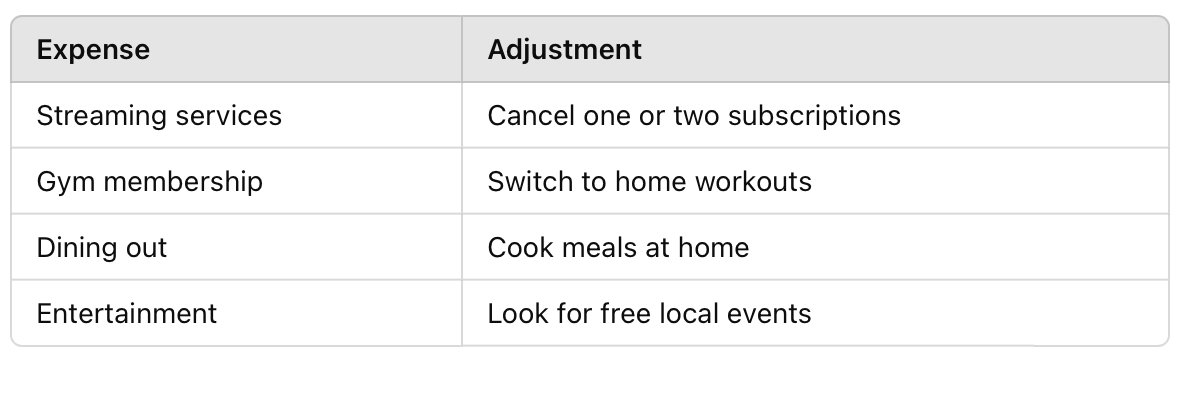
The Ultimate Guide to Understanding and Managing Flexible Expenses
What Are Flexible Expenses?
Flexible expenses are costs that can change from month to month, depending on usage, habits, or financial decisions. Unlike fixed expenses, which remain stable, flexible expenses vary, offering an opportunity to adjust spending and create more wiggle room in a budget.
Fixed vs. Flexible Expenses
Understanding the difference between fixed expenses and flexible expenses is crucial for better money management.
- Fixed expenses: Costs that remain the same each month, such as rent, mortgage payments, and car loans.
- Flexible expenses: Costs that fluctuate based on consumption or choice, such as groceries, dining out, and entertainment.
Examples of Flexible Expenses
Here are some examples of flexible expenses:
- Groceries: You can adjust how much you spend by meal planning or choosing budget-friendly options.
- Dining out: Eating at home can significantly lower this discretionary expense.
- Entertainment: Streaming services, concerts, and hobbies fall into this category.
- Utilities: Electricity, water, and gas bills can vary depending on usage.
- Clothing: Spending on new clothes isn’t a necessity every month.
- Travel: Vacations and trips are expenses that you can plan for and adjust.
Why Managing Flexible Expenses Matters
Effectively managing flexible expenses helps you prioritize financial goals and build a more sustainable budget. Since these expenses are adjustable, they offer the most control over spending habits.
The 50/30/20 Rule
A popular budgeting strategy, the 50/30/20 rule, divides net income as follows:
- 50% on necessities (housing, groceries, utilities, etc.)
- 30% on flexible spending (entertainment, dining, hobbies)
- 20% on savings and debt repayment
By identifying which of your expenses are flexible, you can better allocate your monthly income.
How to Track Your Flexible Expenses
Step 1: Analyze Your Bank Statements
Review your bank account transactions over the past few months to see where your money is going. Categorize your spending to identify non-essential expenses and areas for improvement.
Step 2: Separate Needs from Wants
Differentiate between necessary expenses (groceries, gas, electricity) and discretionary expenses (entertainment, dining out). Cutting back on non-essential expenses can free up funds for savings or debt repayment.
Step 3: Set a Budget for Each Category
Once you've identified your spending habits, create spending limits for different categories, such as:
- Groceries: $400/month
- Dining out: $100/month
- Entertainment: $50/month
- Shopping: $75/month
Adjusting Flexible Expenses to Meet Financial Goals
If you're struggling to pay off high-interest debt or save for an emergency, reducing flexible expenses can help.
Practical Ways to Reduce Flexible Spending
- Cook at home instead of dining out.
- Cancel unused subscriptions like streaming services or memberships.
- Shop smart by using discounts, cashback apps, or generic brands.
- Limit impulse purchases by using cash instead of a credit card or debit card.
The Role of Periodic and Irregular Expenses
While monthly expenses are easier to track, some costs occur less frequently. These include:
- Periodic expenses: Quarterly insurance payments, annual memberships.
- Irregular expenses: Emergency car repairs, medical bills.
Setting aside money in a savings account for these unexpected costs can prevent financial stress.
How to Automate Your Savings
To ensure you're not overspending on flexible expenses, automate your financial plan:
- Direct deposit into a savings account for emergency funds.
- Set up auto-pay for essential bills like rent and car payments.
- Use budgeting apps to track expenses and receive spending alerts.
Deciding Where to Cut Costs
When money is tight, knowing where to adjust expenses is critical. Start by identifying the largest flexible expenses and cutting down on those first.
Examples of Flexible Expenses You Can Reduce

Managing Finances for Self-Employment
If you have self-employment income, tracking flexible expenses is even more essential. Since income can be irregular, setting aside money for taxes, loans, and necessary expenses is crucial for financial stability.
Conclusion: Take Control of Your Flexible Expenses
Understanding and managing flexible expenses is a key step toward financial freedom. By analyzing spending habits, setting realistic budgets, and adjusting when needed, you can reach your financial goals faster while ensuring a stable future.
%20512x512%20google%20store%20app%20logo%20SEPT%2024%2c%202025%20(4)-png.png?width=51&height=51&name=USE!!%20)%20512x512%20google%20store%20app%20logo%20SEPT%2024%2c%202025%20(4)-png.png)



